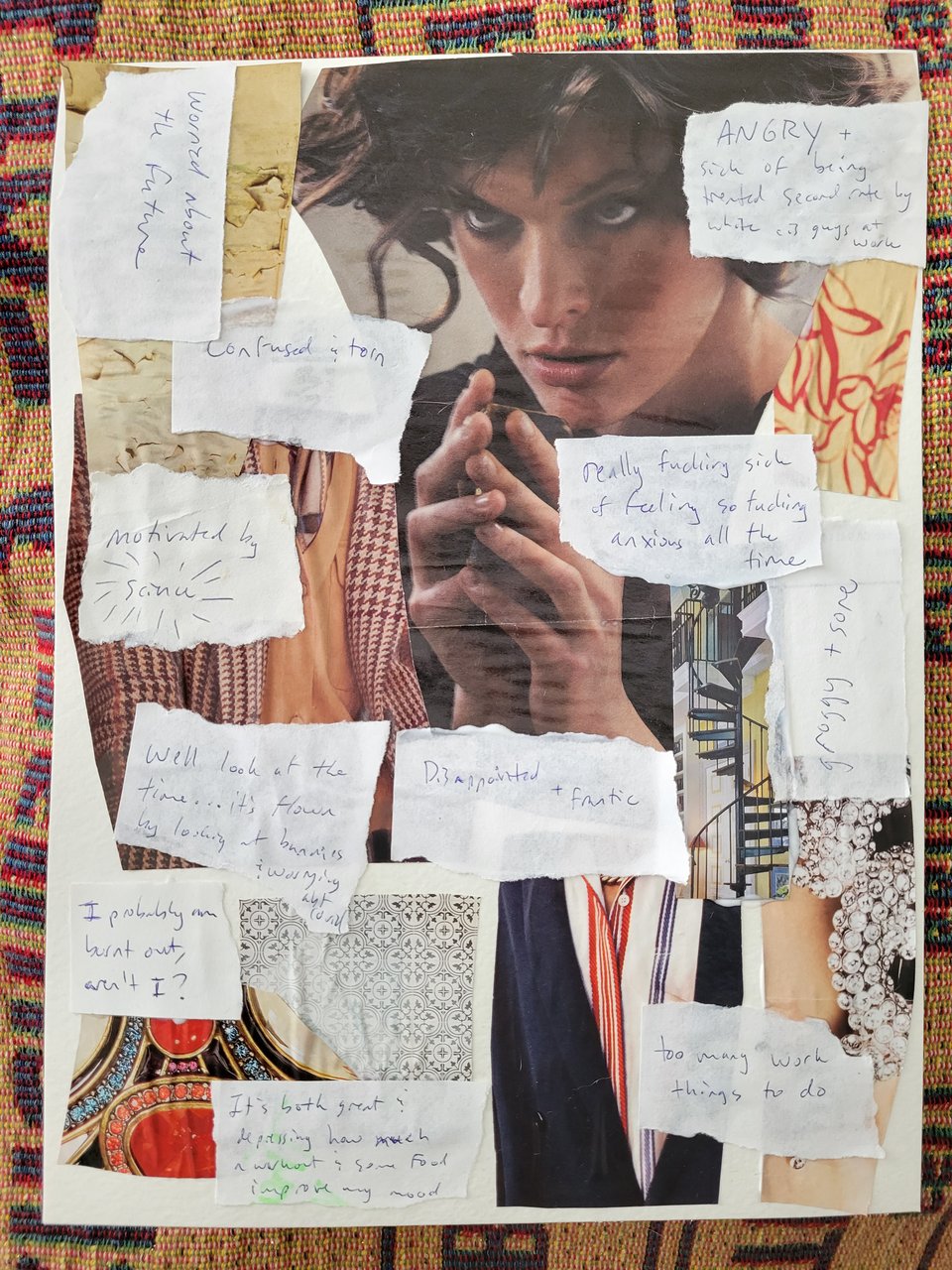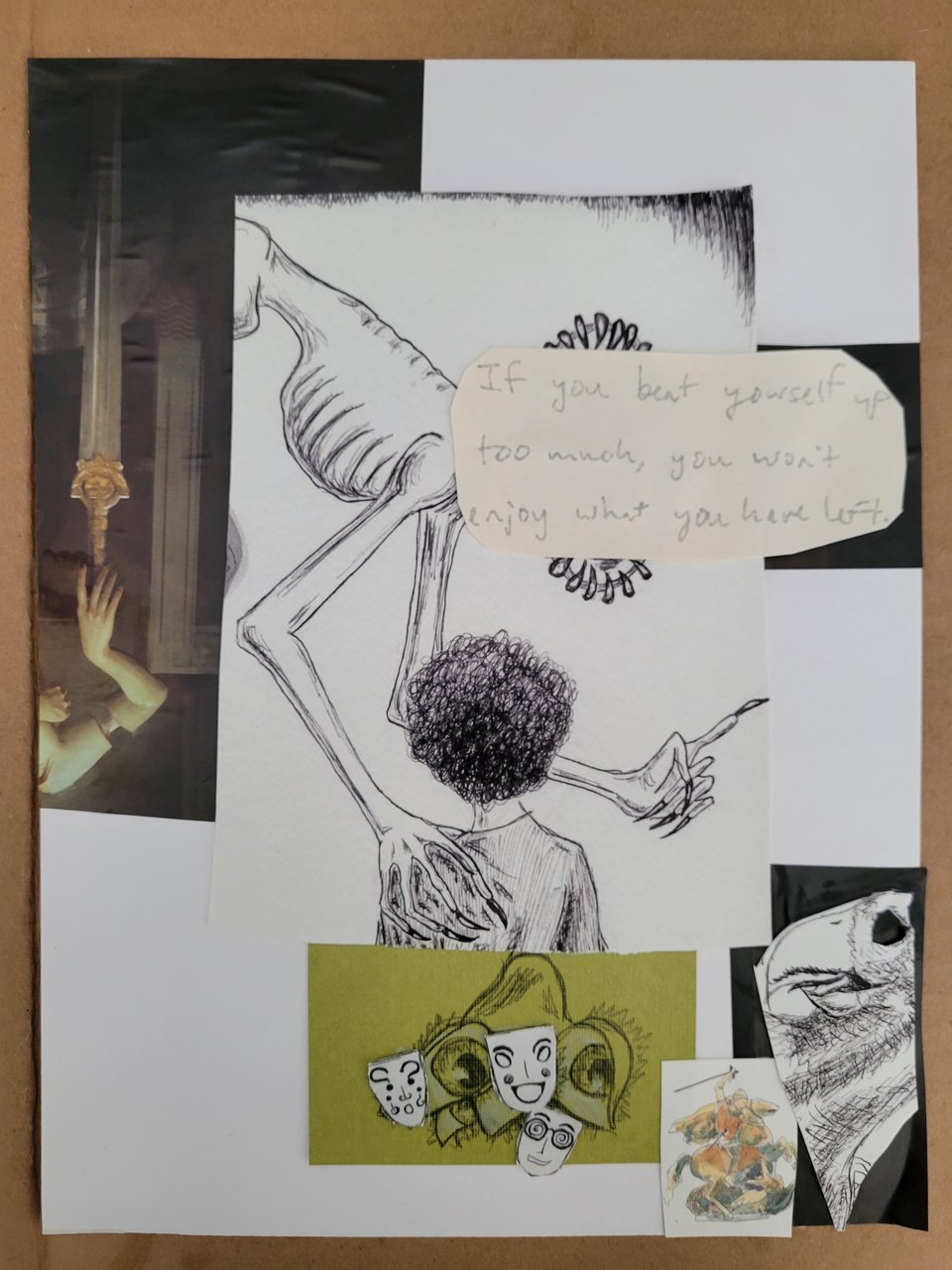Upcycling the self
Hi folks. Today I’m writing about the motivation behind aspects of my work over the past couple of years. Let’s dive in!
But first…ICYMI: Nature loved and lost
icymi: Filter Feeder’s first-ever print volume, Nature Loved and Lost, is now available for digital download and print. For both options, they are priced along a sliding scale, and all proceeds will be donated to ongoing LA fire relief efforts. Arya has crafted a truly incredible anthology in which I’m grateful to have two illustrations featured!
Upcycling the self
through collage, among other media
My collage work began out of frustration. Many of you know that since 2023 I have been making collages as part of my art practice. To this day I am really frustrated with how little artwork I’ve sold, but in 2023 this very keenly affected me. It felt vain and wasteful to keep making things if no one was ever going to buy them. To some extent I would even halt myself from trying out new ideas or directions out of this fatalistic guilt. Of course this made me feel like a “bad artist” on multiple levels, but now I understand that the economics of this meme affect a lot of art-buying in today’s world (not to mention the importance of human connection between buyer and artist; it is not a competition depending on skill/craft). So…I started collaging as a way to minimize waste while processing ideas. I started collaging (upcycling, if you will) my own artwork, original and reproduced, as a way to untie this knot of negative feelings.
This frustration ran deeper than artistic frustration; these collages were born out of burnout. My earlier collages of this period incorporated a little emotion tracker I started while at a former job: every day for a couple weeks I wrote down how I was feeling, roughly every hour, on scraps of paper. Afterwards I clustered the scraps by the feeling and noticed just how angry, tired, and burnt out I was. I needed to find a new job, or at least get out of that one. I was so stressed out all the time that making art felt burdensome and time-consuming when I should be job-hunting or blah blah blah. Collage beckoned me as an accessible medium.

Unintentionally I developed a new body of work. Out of the ashes of exhausted matches, something else was happening. Where I used old artwork I struggled to sell or simply didn’t like anymore, I created something entirely different and…better. I made a zine cataloging the pieces, and it’s resonated with people of various jobs. More importantly, it radically reshaped my relationship with my own work — and myself.

In my frustrated mindset I had unintentionally created a false binary: complete artwork vs. incomplete artwork. I saw a piece as permanent, unchanging once I released it to the world, framed it, made prints of it, etc. Of course that’s not how it works! Another false binary: I can make the art people recognize me for, or not make art. I had stymied myself when I was hardly getting started.
Guess what? When I tried something new, when I took the pieces of artwork that represented other periods of my life and reworked them, it clicked with people. I sold one of the collages, I’ve sold several copies of the zine, and people have appreciated a non-prescriptive conversation around burnout. I no longer felt limited to a specific kind of pen-and-ink work or fantastical illustration. I started collaging different subject matter, I made more zines, and now I’m doing more writing and A Secret New Thing (I will share this soonish maybe).
By upcycling my old artwork, I gave myself the opportunity to look at aspects of myself and see what I wanted to keep, rework, or discard. I was afraid of “breaking” something by going far beyond what I knew or expected. (Ironically, what I knew/expected was broken, in many ways.) I knew something needed to change, yet I was scared of change and so I avoided it at all costs.
I know this line of thinking — of “upcycling” parts of ourselves or ways of doing things — doesn’t apply to everything, but I wanted to articulate how collage helped me break out of a stuck place and rework things from a new mindset. Maintaining a specific style can be exhausting for an artist (or for anyone, really). That doesn’t mean you need to become a whole new person or adopt a whole other way of doing something. I liked some of my artwork, but it was missing something. I had an idea of what I wanted to do for work, but I kept winding up in a similar bad situation. In my mind this is akin to upcycling, since typically upcycled materials don’t “work” entirely on their own anymore and need to be reassembled into something new, often by means that require a bit of ingenuity. In my case the upcycling of both artwork and ideas had a very literal physical manifestation, since I was collaging old artwork and other things lying around the house.
Maybe this is an extended metaphor, maybe it’s a challenge to find more sustainable ways of crafting our goods, processes, and mindsets…
Latest inspiration
Apparently this is the podcast edition of inspo…
I’ve been catching up on Imaginary Worlds, a podcast about genre fiction. I really clicked with the latest episode about body horror. I love body horror, but the host doesn’t, so he walks through his particular revulsion towards it, as well as the cultural impact past and present of body horror. There’s a poignant segment about trans body horror, too.
The Imaginary Worlds episode about Syd Mead was super eye-opening. You’ve seen his influence without knowing it throughout sci-fi over the decades, and it turns out his queerness also played a role in the kinds of futures he envisioned, despite being closeted while still alive.
Bright Green Futures is another podcast I’ve been trying to get up to speed on. It’s hosted by climate fiction author Susan Kaye Quinn, and she interviews other climate authors, reads excerpts from hopeful climate future stories, and discusses the way climate fiction is made. The episode about narrative structure fascinated me, since in it she explains how the shift of climate storytelling from the traditional “hero narrative” to a “collective narrative” is an essential structural change that emphasizes the importance of working in community to combat climate change.